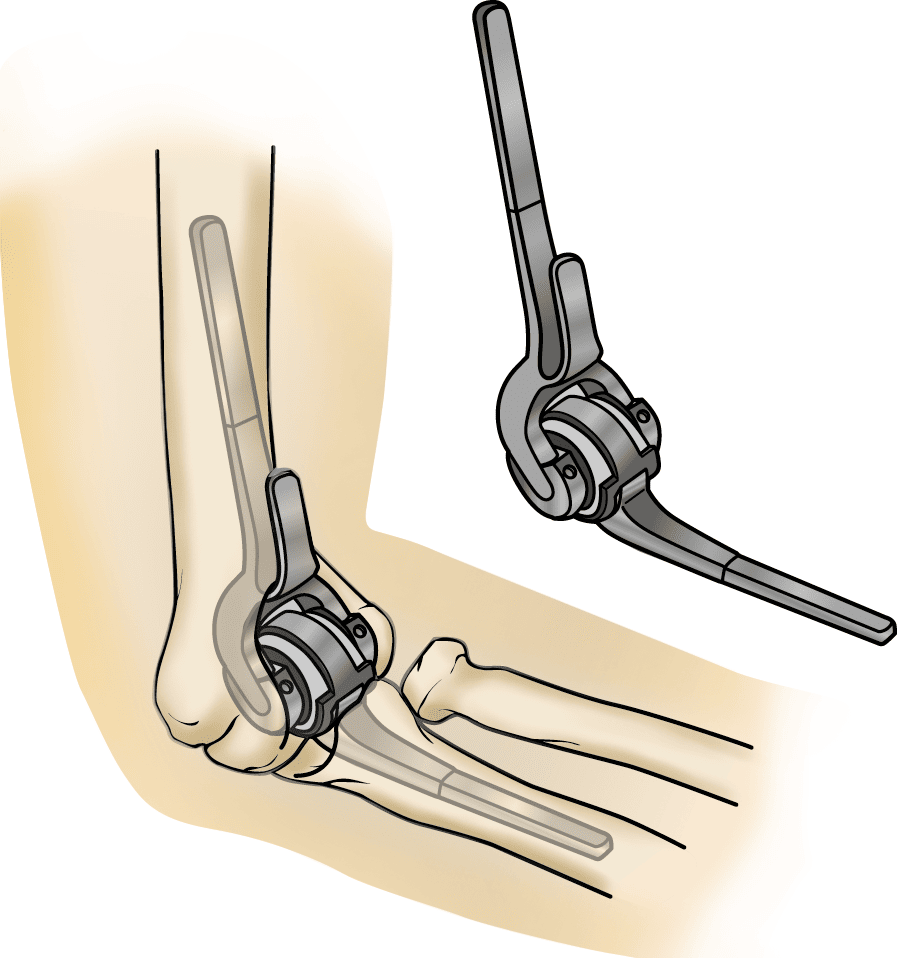Elbow Replacement Surgery: Restoring Function and Mobility
Subheading: Understanding the Procedure, Benefits, Recovery, and Potential Complications
Description:
Elbow Replacement Surgery, also known as elbow arthroplasty or elbow joint replacement, is a surgical procedure that aims to alleviate pain, restore range of motion, and improve function in individuals suffering from severe elbow joint conditions. This comprehensive guide will provide insights into the procedure, its benefits, the recovery process, and potential complications.

Understanding the Procedure:
Elbow replacement surgery involves removing damaged or diseased portions of the elbow joint and replacing them with artificial components. The procedure is typically recommended for patients with advanced arthritis, traumatic injuries, or other conditions that cause severe pain and limited mobility. During the surgery, the surgeon makes an incision and carefully removes the damaged bone and cartilage. They then position the artificial components, which may consist of metal and plastic, to recreate the normal joint structure. Once the new components are securely in place, the incision is closed, and the arm is immobilized to promote healing.
Benefits of Elbow Replacement Surgery:
Elbow replacement surgery offers numerous benefits to patients. Firstly, it can significantly reduce or eliminate chronic pain, enabling individuals to resume their daily activities with ease. Secondly, the surgery improves joint function and range of motion, allowing for increased flexibility and mobility. Patients often experience improved grip strength, enabling them to perform tasks that were previously challenging or impossible. Moreover, elbow replacement surgery can enhance the overall quality of life by restoring independence and relieving the physical and emotional burden associated with debilitating elbow conditions.
Recovery Process:
Following elbow replacement surgery, a comprehensive rehabilitation program is essential for optimal recovery. Physical therapy plays a crucial role in gradually restoring strength, flexibility, and range of motion. The therapist will guide patients through specific exercises designed to improve joint function and muscle strength. Initially, the arm may be immobilized with a splint or brace, but as the healing progresses, gradual movement and exercises will be introduced. The recovery period may vary, but most patients can expect to regain functionality within a few months after surgery.

Potential Complications:
While elbow replacement surgery is generally considered safe and successful, like any surgical procedure, it carries potential risks and complications. These may include infection, blood clots, nerve damage, allergic reactions to anesthesia, and the possibility of artificial joint components wearing out over time. It is crucial for patients to have open and honest discussions with their orthopedic surgeon to understand the potential risks, benefits, and expected outcomes of the procedure.
In conclusion, Elbow Replacement Surgery offers a promising solution for individuals suffering from severe elbow joint conditions. By restoring function and mobility, this surgical procedure can significantly improve the quality of life for patients experiencing chronic pain and limited movement. However, it is essential for patients to consult with their healthcare provider to determine if elbow replacement surgery is the right option for their specific condition, and to address any concerns or questions they may have.
We are associated with experienced and highly skilled medical professionals. We use the latest medical technology available in the world and we provide medical services in collaboration with JCI & NABH Certified hospitals only. Our services include various types of treatment and organ restructuring and transplant.
